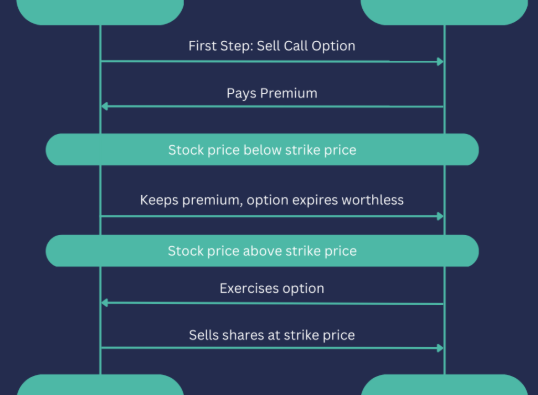
When it comes to analyzing stocks, investors often look beyond just the price movements. Stock fundamentals are the core financial metrics and qualitative factors that can help investors determine the true value of a stock. In this article, we’ll dive into what stock fundamentals are, how they can influence your investment decisions, and why they matter for anyone looking to make informed investment choices.
What Are Stock Fundamentals?
Stock fundamentals refer to the key financial and economic factors that can affect a company’s stock price. These include measures like cash flow, earnings, and return on assets (ROA). Investors use these metrics to assess the overall health of a company and its potential for growth, helping to determine whether its stock is under or overpriced in the market. By examining a company’s fundamentals, investors can get a clearer picture of its long-term value, beyond the short-term market fluctuations.
Breaking Down Stock Fundamentals
Unlike technical analysis, which focuses on price movements and patterns, fundamental analysis looks deeper at a company’s financial health and broader market factors. Key elements that fundamental analysts consider include:
- Cash Flow: The amount of cash generated or consumed by the company.
- Earnings Per Share (EPS): A key profitability indicator, representing a company’s net profit divided by the number of outstanding shares.
- Profitability Ratios: Metrics such as ROA (return on assets) that indicate how efficiently the company is using its assets to generate profit.
- Growth Prospects: Assessing whether the company is expanding, its market position, and its plans for future growth.
Fundamental analysis helps investors understand the factors driving a company’s stock price and provides insights into whether the stock’s price is aligned with its intrinsic value.
Example of Stock Fundamentals in Action
To understand how stock fundamentals work, imagine you’re shopping for electronics at a mall. You’re looking for a laptop, but you’re not just going to buy the first one you see. You’ll examine the specs, read reviews, and assess the laptop’s performance and warranty. Similarly, fundamental analysts evaluate a company’s balance sheet, profit margins, and earnings to decide whether a stock is worth purchasing.
Like a savvy shopper waiting for the right moment to buy a product, fundamental analysts wait for stocks to fall out of favor with the market before jumping in. They look for underpriced stocks, focusing on companies with solid growth potential that might not be appreciated by the general market.
For instance, if a company’s stock is undervalued, the analyst might compare its true worth (its intrinsic value) to the current market price. If the stock is trading for less than its intrinsic value, it could be a potential buying opportunity.
Why Are Stock Fundamentals Important?
For investors who are interested in long-term growth, stock fundamentals provide a reliable foundation for investment decisions. Rather than focusing on market speculation or short-term trends, fundamental analysis helps investors identify companies with strong financials and sustainable growth. While the market can be volatile, fundamental analysis helps mitigate risks by focusing on the long-term value of an investment.
Additional Thoughts on Stock Fundamentals
Some investors might shy away from fundamental analysis due to the time and effort involved. However, it’s important to remember that this strategy can be rewarding. By analyzing a company’s financial health, its earnings reports, and other metrics, investors can gain a better understanding of its potential.
Additionally, fundamental analysis can help investors protect themselves from the short-term volatility of the stock market. Even if a stock is currently undervalued, patience is required to see the full value of that investment realized over time.
Although no analysis method is foolproof, understanding stock fundamentals can provide a clearer picture of whether a stock is undervalued or overpriced. It’s essential for investors to weigh their findings with a healthy dose of caution and not rely solely on luck or market sentiment.
Comparing Fundamental and Technical Analysis
While fundamental analysis looks at a company’s financial health and long-term growth potential, technical analysis focuses on stock price movements and market trends. Here’s a brief comparison:
- Estimating Value: Fundamental analysis uses a company’s financial statements to determine its intrinsic value, while technical analysis uses past price movements to forecast future trends.
- Time Horizon: Fundamental analysis tends to focus on long-term trends, looking at financial data over several years. On the other hand, technical analysis is typically used for short-term trades, examining price charts over a few weeks or months.
- Tools and Data: Fundamental analysts study balance sheets, income statements, and cash flow reports, while technical analysts rely on stock price charts and trading volumes.
- Financial Goals: Investors using fundamental analysis typically aim for long-term investment opportunities, focusing on a company’s overall performance. In contrast, technical analysis is often used by traders looking for short-term profits based on price patterns.
Many investors use a combination of both methods to make more well-rounded decisions. By looking at both the long-term fundamentals and the short-term market trends, investors can identify more profitable opportunities.
Conclusion: The Power of Stock Fundamentals
Understanding stock fundamentals is crucial for making informed investment decisions. By focusing on a company’s financial health, cash flow, and growth prospects, investors can identify undervalued stocks with strong long-term potential. While market trends and speculation can drive short-term price fluctuations, a solid understanding of the fundamentals provides a more stable basis for investing.
Incorporating both fundamental and technical analysis into your strategy can help you make better investment choices. By evaluating a stock’s true worth and monitoring market movements, you’ll be equipped to navigate the complexities of the stock market and make smart, data-driven decisions.









